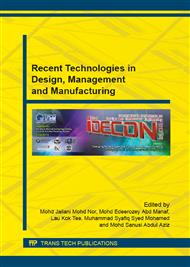p.8
p.12
p.17
p.22
p.27
p.32
p.37
p.42
p.47
Numerical Investigation of 3-D Turbulent Flow in Orifice Plate within a Pipe
Abstract:
A numerical study of the turbulent flow in an orifice plate within a pipe is carried out by utilizing the Navier-Stokes (N-S) equations. The governing equations are solved using primitive variables with a finite volume method (FVM) and simulated using the finite volume based commercial CFD code ANSYS. The study investigates the influences of Reynolds numbers (Re = 5000, 10000, and 15000) and aspect ratio (β = 0.2, 0.3, and 0.5), on the flow characteristics, i.e. the velocity profile, the differential pressure, and the vorticity, and on the mechanical properties, i.e. the strain, the stress, and the total deformation of the flow around and beyond the orifice. It is found that as the Reynolds number increases, the flow velocity and the pressure increase. The vorticity images show a slightly different behavior. As the Reynolds number has its own effect on the results, it is also found that the aspect ratio affects the results more significantly. The flow patterns are presented for unsteady flow throughout the orifice plate at different values of the Reynolds number.
Info:
Periodical:
Pages:
27-31
Citation:
Online since:
May 2015
Keywords:
Price:
Сopyright:
© 2015 Trans Tech Publications Ltd. All Rights Reserved
Share:
Citation:


